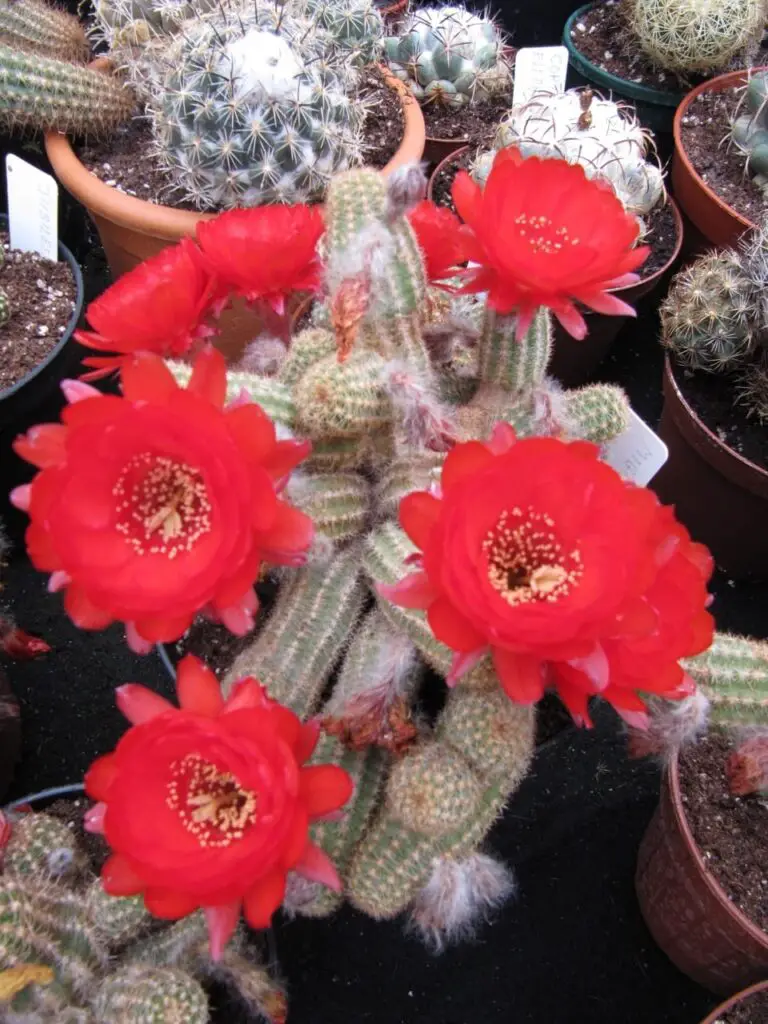How To Choose Mint And How To Grow It
Mint, a member of the Lamiaceae family, is one of the most widespread and popular herb families globally. This family also includes fragrant herbs like bergamot, catnip, sage, rosemary, basil, and flowering salvias. There are approximately 25 mint species originating from Eurasia, North America, southern Africa, and Australia, with many having naturalized in various locations worldwide.
Mint’s long history of coexistence with humans is evident in biblical references and mentions throughout ancient Roman, Greek, Egyptian, and Chinese records. Today, growing mint plants remains remarkably easy, despite its notorious reputation for being difficult to control. Mint thrives in a range of conditions, from full sun to cool, moist settings with filtered light. However, it’s most invasive when given the right environment.
The key to successful mint cultivation lies beneath the soil surface – the ‘runners’ that spread quickly and aggressively. To keep mint under control, plant it in a pot and bury about two-thirds of the container where you want your mint plants to grow. This will act as a barrier, preventing the mint from spreading uncontrollably throughout your garden.
Description
The Lamiaceae family’s distinctive characteristics – think square-ish stems and slightly hairy leaves – make it a botanical cousin to popular herbs like Basil, Sage, and Catnip. Within this group, most mint species grow as tall as 2-4 feet, boasting small pink-violet flowers that add a touch of whimsy to their herbaceous charm. What’s more, all mints in this family are perennial plants, with some varieties being particularly persistent in their growth.
Light, Soil, and Moisture Requirements
When it comes to growing mint, one key aspect is the environmental conditions it thrives in. In terms of light exposure, most mint varieties prefer full sun to partial shade, with some exceptions that can tolerate more shade. Soil-wise, mint does well in average, well-drained soil that provides a consistent foundation for growth. Perhaps the most critical factor, however, is moisture levels.
Mint prefers moderate to wet soil conditions, and it’s essential to maintain consistent hydration to promote healthy development.
Gardening Tips for Growing Mint
To keep mint’s invasive tendencies in check, consider containing it within an open-bottomed 5-gallon container buried in the ground or surrounded by a barrier that defines its growing space. This method has been effective for some gardeners, who have coiled their hose around the plant to provide consistent moisture and control its spread. The occasional damage caused by the hose’s regular movement serves as a natural check on mint’s growth.
Alternatively, you can start mint from seed or a seedling, with equal success. Its ability to be easily divided also makes it simple to share varieties with neighbors or expand your own mint garden.
CULTIVATION
Mint thrives in a sunny to semi-shaded environment with consistent moisture levels. While it can adapt to various climatic zones, it’s often cultivated as an annual in cooler regions where temperatures fluctuate significantly. In colder climates, the plant typically dies back over winter before reviving when conditions become more favorable. One of mint’s defining characteristics is its tendency to spread aggressively via stolons, which produce new roots and shoots at each node.
To keep this growth under control, consider growing it in a container or pot. This will prevent it from overwhelming nearby plants, as it can quickly outcompete other herbs for resources. To maintain the health and appearance of your mint plant, prune it back regularly when it begins to exhibit woody characteristics. In addition to regular harvesting and watering, be sure to provide it with occasional doses of fish emulsion and liquid seaweed to promote its overall vitality.
VARIETIES
When it comes to adding visual interest or subtle nuance to your space, there’s a minty option for every taste. If you’re looking for something with a bit of depth, consider ‘Chocolate’ peppermint, which brings a rich, chocolatey undertone to the table. For a sweeter, more playful vibe, ‘Pineapple’ mint is a great choice, boasting variegated cream and green leaves and a fruity aroma that’s sure to brighten up any room.
If you want an especially fine-grained texture, ‘Corsican’ mint is the way to go – its tiny, rounded leaves create a lush, slow-spreading groundcover that can thrive in even the most challenging environments. While these are just a few of the many mints out there, they’re some of the most popular and widely available options for those looking to bring a touch of minty charm into their lives.
Apple/Pineapple mint (Mentha suaveolens)
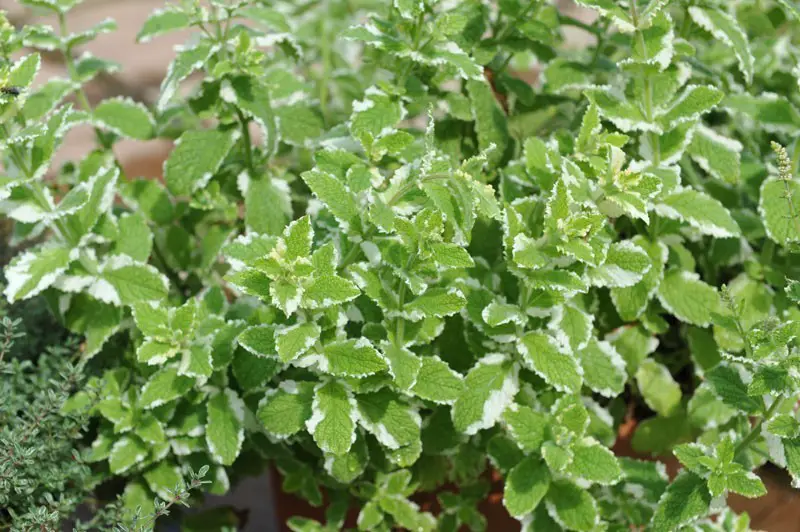
The flavor profile of this variety is characterized by its refreshing minty taste, which is subtly enhanced by hints of apple and pineapple sweetness. This unique combination makes it an excellent choice for creating delicious apple mint jelly recipes. In terms of appearance, the plant grows to be around 50cm tall and spreads out nicely, featuring foliage that is surprisingly woolly in texture. The leaves have a rounded shape and can be either plain green or display beautiful variegation.
As an added bonus, the plant produces lovely mauve-colored flowers.
Banana mint, Mentha arvensis ‘Banana’
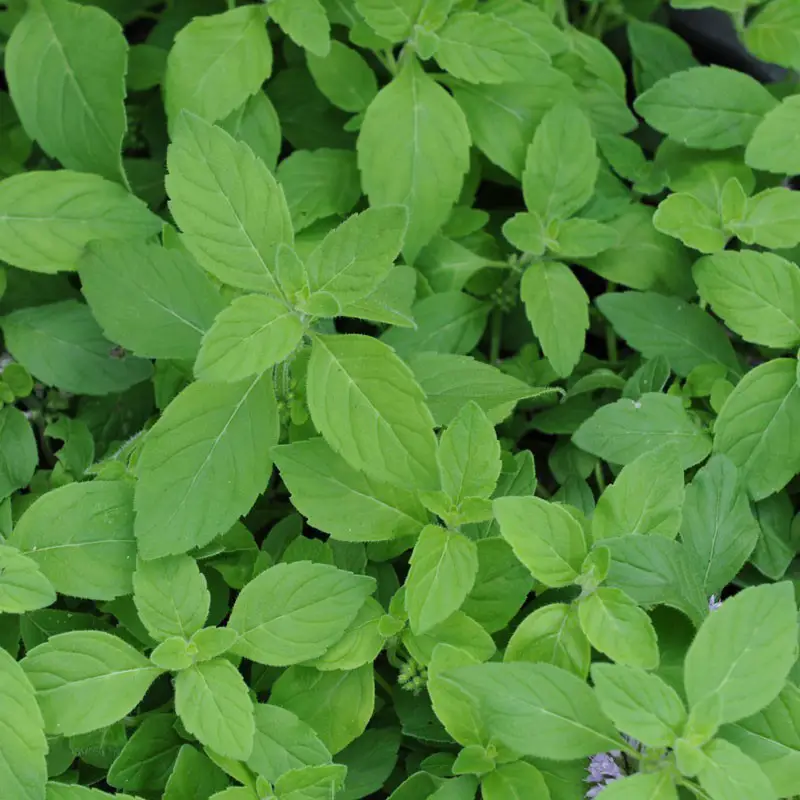
The flavor profile of this particular mint is distinctly minty, with incredibly pronounced undertones of banana. When grown to its full height of around 40cm, the plant spreads quite extensively and boasts bright lime-green foliage that’s lightly covered in a soft down. Notably, the growth rate of this species is slightly less vigorous than some other members of the Mentha genus. As the plant matures, it produces beautiful purple flowers.
Basil mint, Mentha x piperita citrata

This herb’s flavor profile is a delightful blend of sweet and spicy notes, reminiscent of the rich aromas found in traditional Italian cuisine. Standing tall at 45-60cm, it boasts an upright growth habit that makes it easy to incorporate into any garden design. As if its unique taste wasn’t enough, this variety also produces beautiful purple flowers that add a pop of color to the landscape.
Chocolate mint, Mentha x piperita citrata ‘Chocolate’
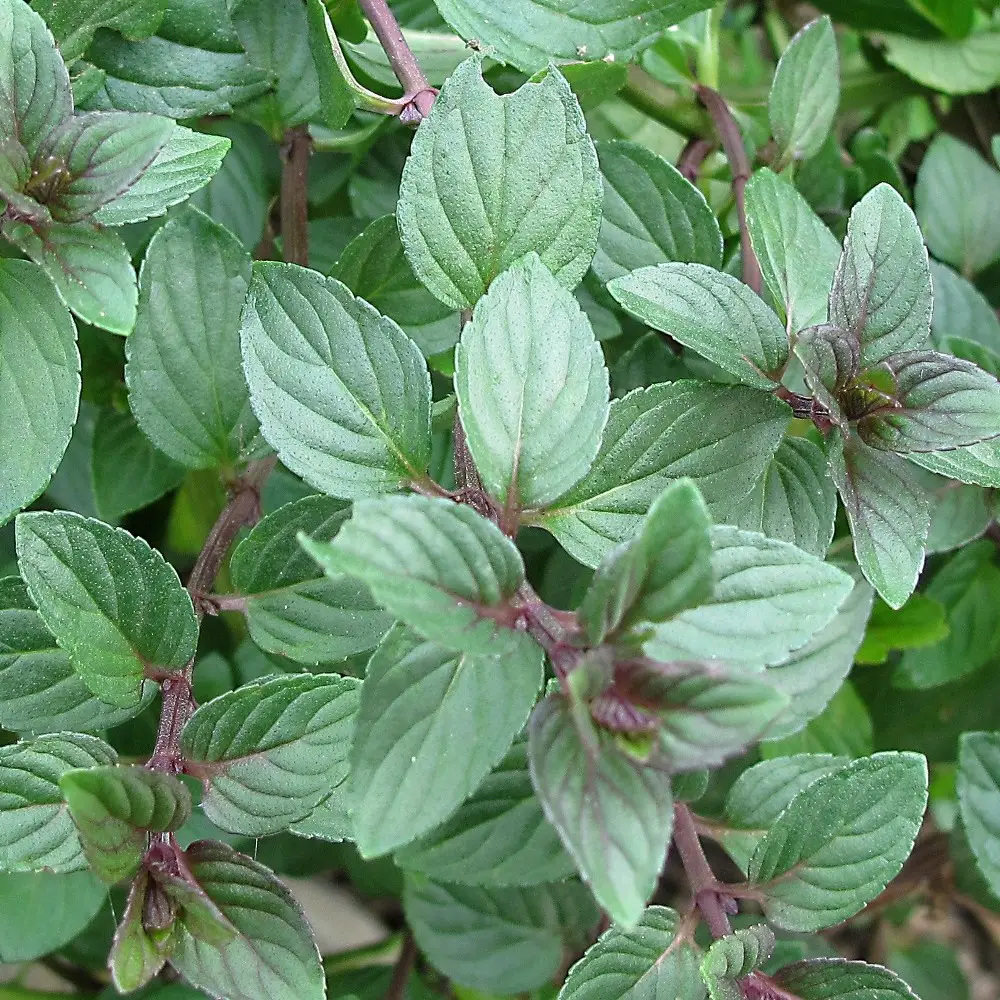
The plant’s flavor profile is a refreshing blend of peppermint, subtly nuanced by rich chocolate notes. In terms of physical characteristics, the specimen stands at approximately 60 centimeters in height and width, boasting deep green leaves accompanied by dark red to purple stems. The addition of lilac-colored flowers further adds to its visual appeal.
Corsican mint, Mentha requienii.
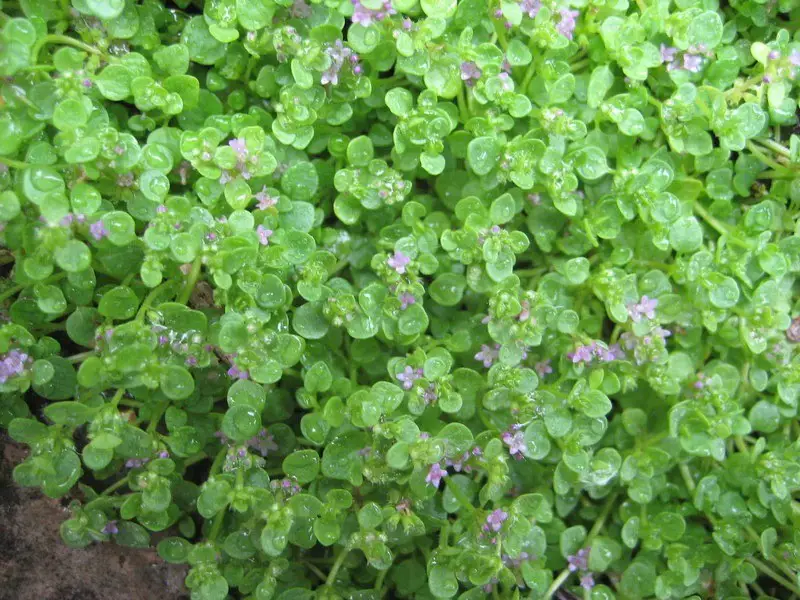
The flavor profile is characterized by peppermint, a compact herb that reaches heights of only 1-3 cm. Its tiny, rounded leaves are densely packed and spread out in a flat, carpet-like arrangement. This low-growing perennial is surprisingly resilient and can withstand light foot traffic. Additionally, it produces delicate lavender flowers, adding to its charm.
Eau de Cologne, Mentha citrata
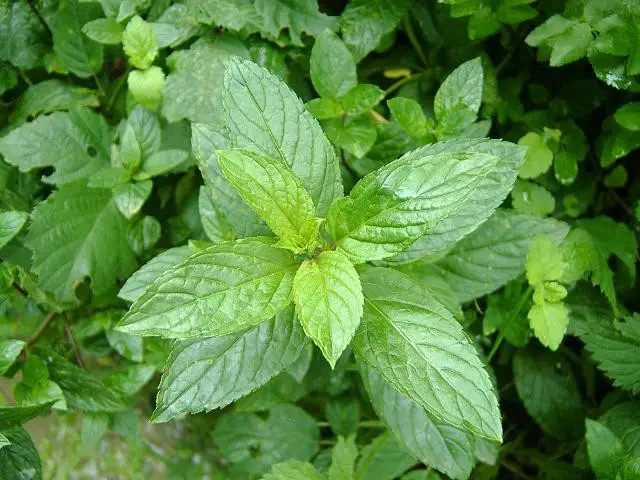
The distinct flavor profile of this mint is characterized by a sharp lemon perfume or aroma. With a mature height of 45-60cm and a spread of approximately 1 meter, the plant features green leaves with subtle purple undertones. In terms of blooms, it produces lilac flowers. Interestingly, this particular species has been used as an original source for eau de cologne fragrances and remains one of the most potent and fragrant mint varieties to date.
Egyptian mint, Mentha niliaca
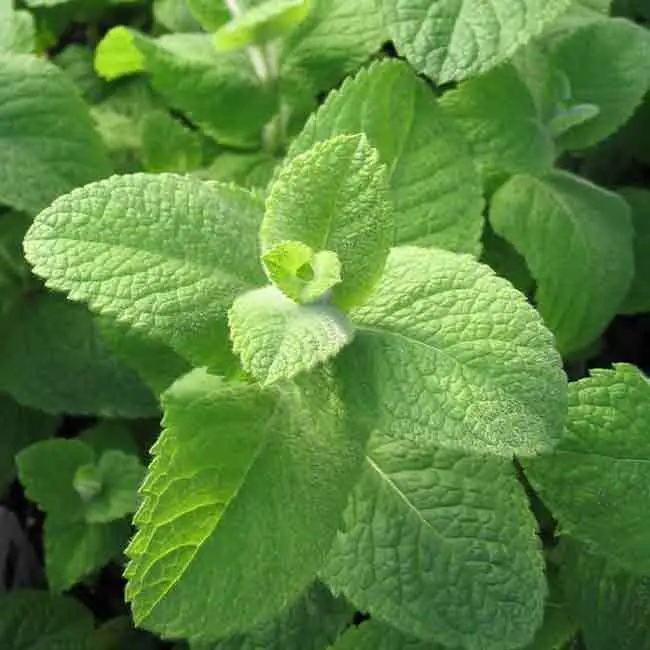
The flavor profile of this particular mint is characterized by its mild peppermint notes, reminiscent of apple mint. The plant itself is quite striking, with long, pointed leaves that are serrated and covered in fine silvery hairs, giving them a distinctive silver appearance. This ancient mint has been used for centuries, dating back to the time of the Pharaohs. Its rarity only adds to its allure, and it’s also said to be referenced in certain biblical passages.
When it blooms, it produces beautiful purple flowers.
Ginger mint, Mentha spicata species
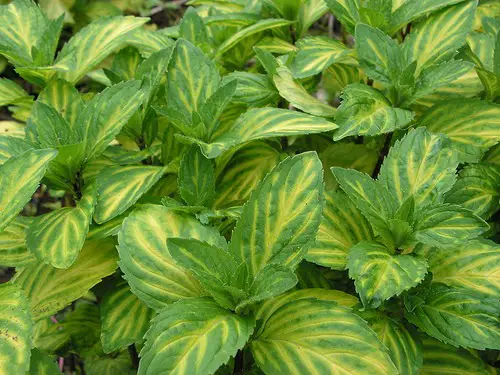
The flavor profile of this plant is a unique blend of spearmint with subtle undertones of ginger. Standing at an impressive 60cm in height and measuring 40cm in width, this herbaceous beauty boasts an erect habit. Its leaves are serrated and heart-shaped, while the stems take on a reddish hue. The crowning glory is the delicate lavender flowers that bloom, adding to its charm.
What sets this plant apart is its ‘double mint’ characteristics, featuring both carvone and menthol – a rare combination in the world of herbs.
Hung Cay mint, Mentha x gracilis
Flavor: Spicy, zesty Vietnamese mint flavor.
Mentha x gracilis hybrids are a delight to behold, measuring 40-60cm in height and spanning 30cm in width. Their bright green thin leaves are a striking feature, while the lilac flowers they produce add an extra layer of charm. As one of the many Mentha x gracilis hybrids, it’s no wonder that there can be confusion surrounding their naming. In fact, some may mistakenly refer to them as Mentha javanica.
However, it’s important to note that this is not to be confused with Vietnamese mint, Persicaria odorata.
Japanese Menthol mint, Mentha arvensis var piperascens
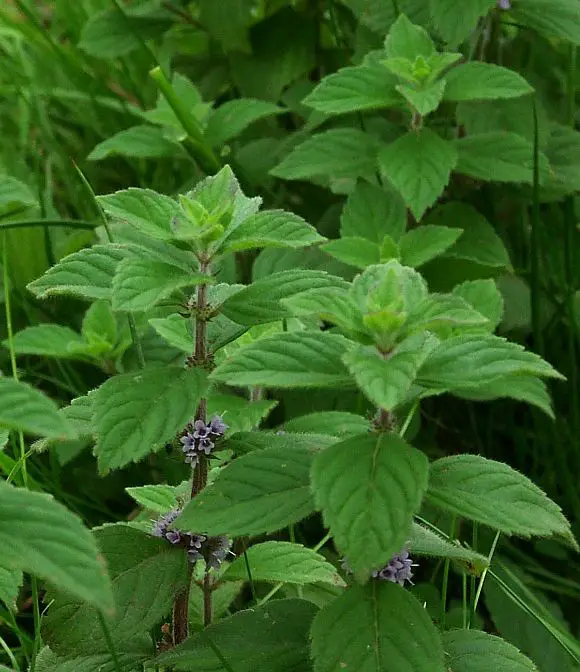
The flavor profile of this plant is characterized by a bold menthol taste with subtle peppermint undertones, providing a refreshing sensory experience. Meanwhile, the physical attributes of the plant are notable for its 60cm height and sprawling 1m wide leaves that are long, thin, and covered in soft grey-green down. In terms of blooms, the plant produces vibrant purple flowers. Interestingly, it thrives in wet grasslands near rivers and lakes, where it can be found growing naturally.
Moroccan Mint, Mentha spicata var. crispa
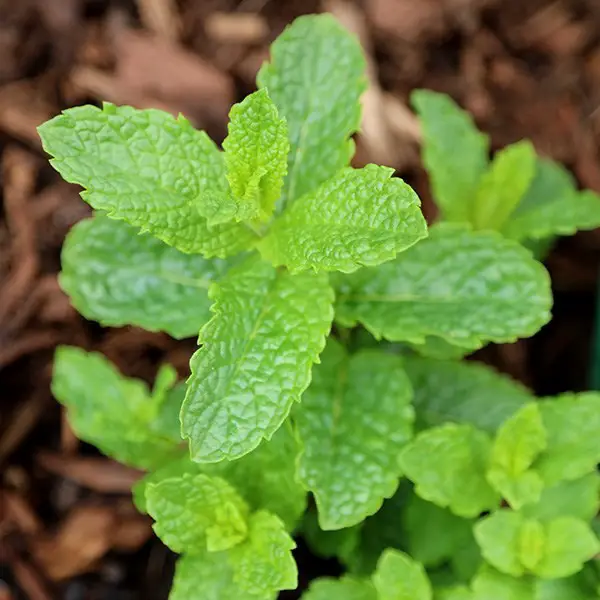
The herb’s flavor profile is characterized by its sweet and refreshing mintiness, which makes it a popular choice for blending with sugar and green tea to create a traditional Moroccan tea experience. The combination of these flavors is both soothing and invigorating, perfect for sipping on a warm day or as a pick-me-up any time of the year. When grown, the herb’s foliage is bright-green in color and features soft-toothed leaves that add texture to any arrangement.
In terms of blooms, the plant produces lilac-colored flowers that add a pop of color and fragrance to the garden.
Old-Fashioned Garden mint, Mojito Mint, Mentha x villosa
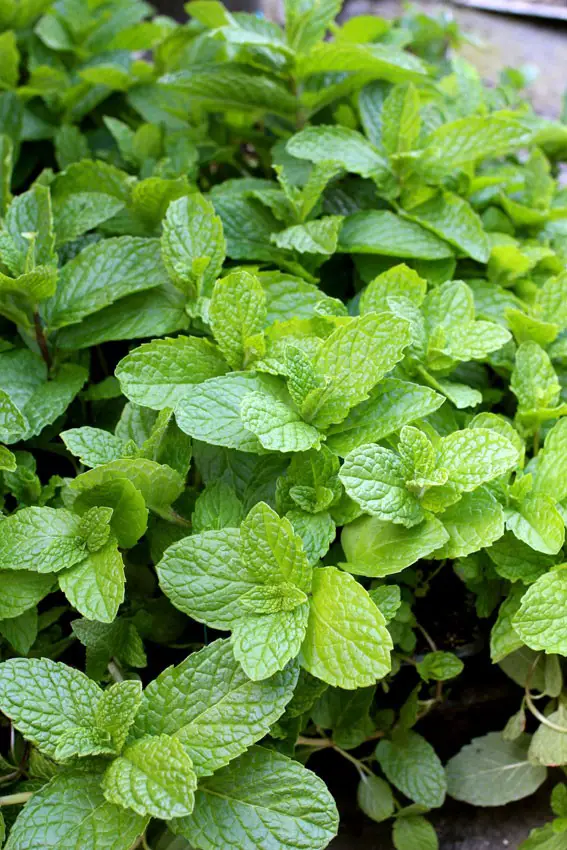
The distinctive flavor of mint is undeniable, with its bold and refreshing aroma that’s hard to resist. One of the most recognizable characteristics of this herb is its strong minty taste, which is often associated with toothpaste and mouthwash. But beyond its pungent scent, mint also boasts beautiful white flowers that bloom from May to July.
In fact, the old-fashioned variety of mint is a popular choice for many gardeners, as it’s easy to grow in a well-drained area with full sun to partial shade. When mature, mint plants can reach up to 30cm tall, spreading outwards as they go. Whether you’re looking to add some zest to your cooking or simply want to enjoy the beauty of this low-maintenance herb, mint is a great choice for any gardener.
Pennyroyal, Mentha pulegium

Flavor is a substance that should be approached with caution, as even small amounts can have devastating consequences. Pregnant women are advised to avoid it altogether, as it has been linked to miscarriage, liver and kidney damage, organ failure, and in extreme cases, death. This potent substance also goes by the name of pule-gone, a compound responsible for its toxic properties. When it comes to its appearance, flavor is characterized by its ability to spread and form a dense ground-cover.
The leaves are small and glossy green, with tiny mauve flowers adding a pop of color to this otherwise unassuming plant. Traditionally, flavor has been used as a natural flea repellent, but its toxic properties make it a substance that should be handled with care.
Peppermint, Mentha x piperita
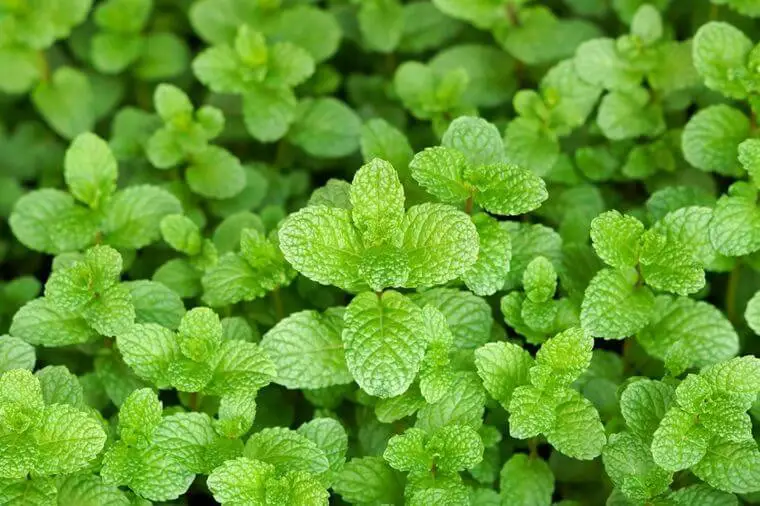
The flavor profile of this true peppermint is a fascinating blend of sharp, spicy notes that tantalize the taste buds, yet simultaneously provide a cooling sensation. As you savor the essence, the vigorous minty aroma wafts through the air, reminiscent of fresh foliage and stems with a subtle reddish hue.
This sterile hybrid, a cross between Mentha aquatica and Mentha spicata, is prized for its versatility in both culinary and medicinal applications, making it an invaluable addition to any kitchen or apothecary cabinet.
Spearmint, Mentha spicata

True spearmint is a versatile herb that stands out with its bright-green, spear-shaped foliage, which not only provides a striking visual appeal but also boasts a high level of aroma. Reaching 50-90cm in height and spreading as it grows, this variety is characterized by pink or white flowers, making it a popular choice among gardeners. As the original species, true spearmint has given rise to many other cultivars, solidifying its position as a foundation for the mint family.
Vietnamese mint, Persicaria odorata
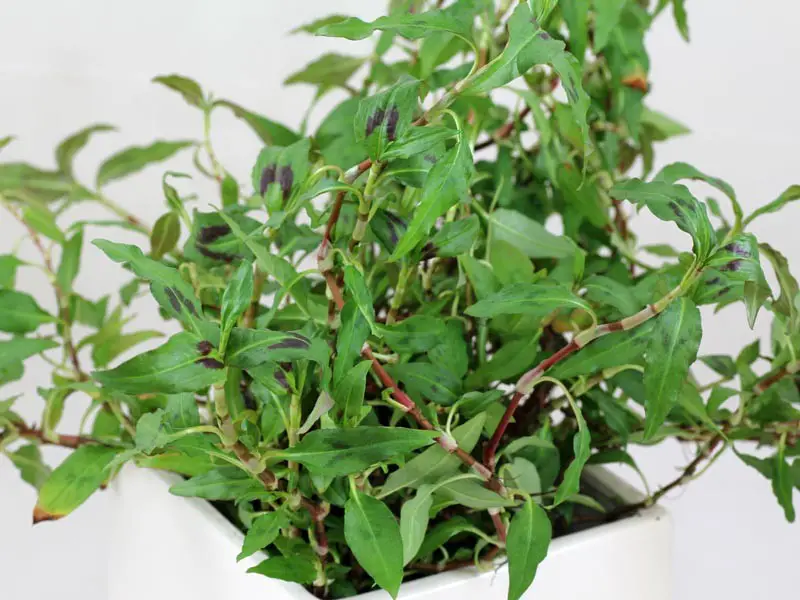
The flavor profile of this herb is characterized by a peppery hot taste that bears a striking resemblance to coriander. Its growth habit is unique, as it can reach heights of 30-50cm and sprawl as a creeping perennial. The aromatic leaves are elongated and green in color, featuring reddish-brown markings that add to their visual appeal. Small pink flowers also adorn the plant, making it a visually appealing addition to any garden or culinary setting.
Its popularity is undeniable, particularly in Asian cuisine where it’s used extensively. Despite not being a true mint, its widespread use has earned it a spot among this herb’s popular cousins. One note of caution: under the right conditions, this herb can become a weed in certain areas.
White peppermint, Mentha piperita officinalis

When it comes to the flavor profile, our peppermint offering takes on a milder tone. One notable difference is its subtle coloration, with a paler green hue that sets it apart from other varieties. Additionally, this type of peppermint tends to lack the reddish stems often found in other types, further distinguishing it from the rest.
River mint, Mentha australis
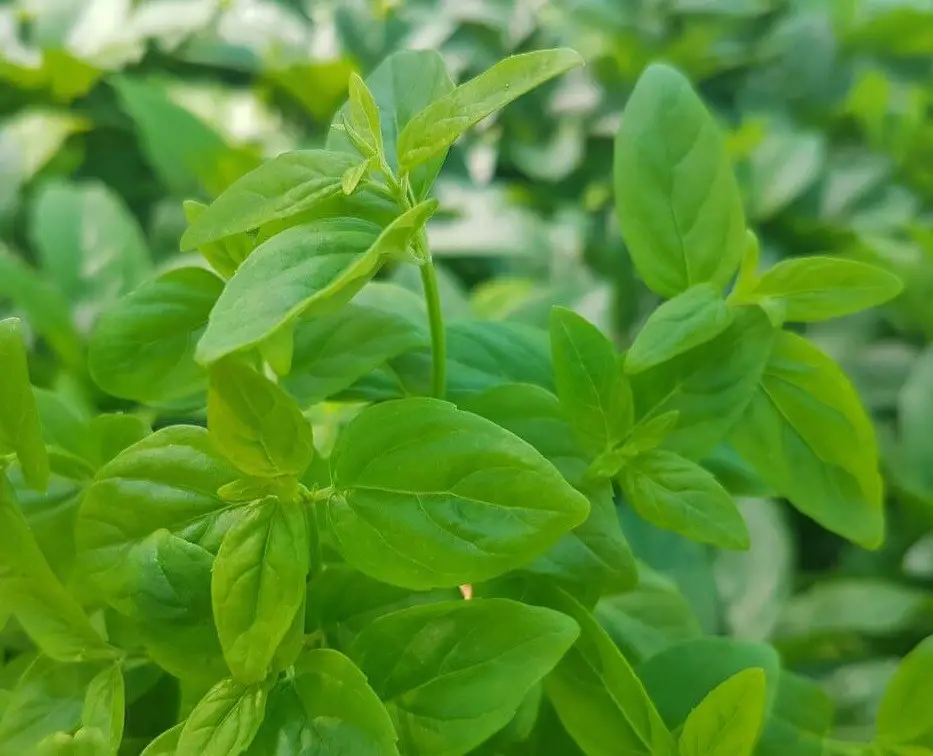
The aroma of this herb is reminiscent of fresh mint leaves, with a subtle sweetness that evokes the sensation of sipping on a refreshing spearmint tea. This bush tucker herb stands out at 70cm in height and spreads approximately 1m wide, making it a popular choice for culinary enthusiasts. Its beauty extends beyond its flavor profile, as it produces delicate white or mauve flowers that add an extra layer of visual appeal to any garden setting.
Slender mint, Mentha diemenica (means “of Tasmania”)
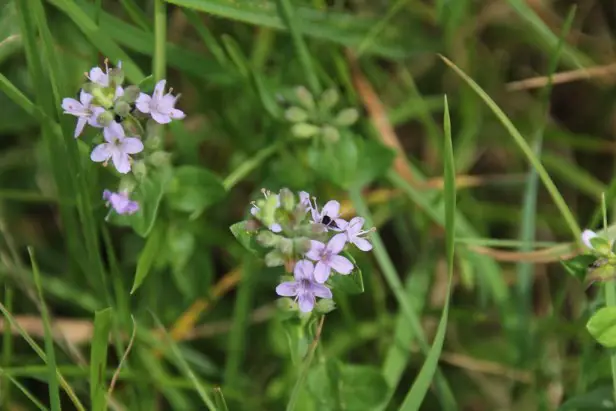
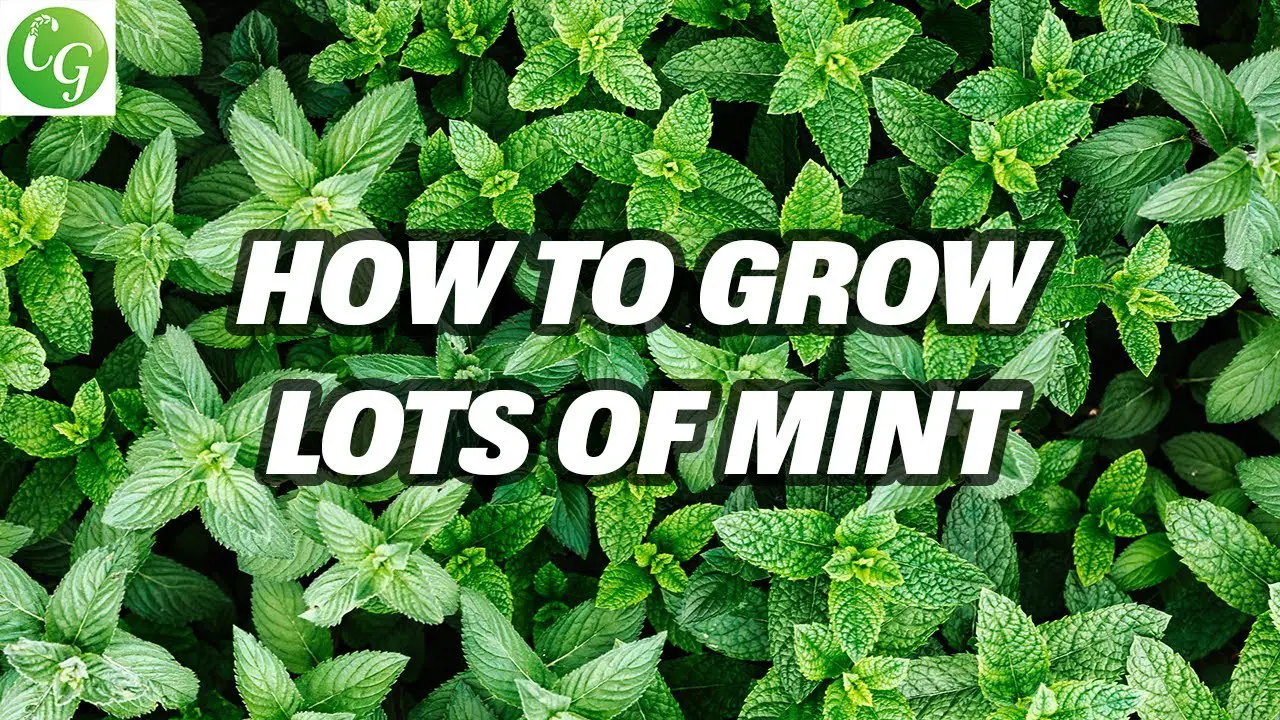
The aromatic flavor profile of this plant is characterized by a subtle yet refreshing soft mintiness, inviting you to take a closer sniff. Its natural habitats include Tasmania and southern Victoria, where it thrives as a dense ground-cover with small, rounded leaves. When in bloom, white flowers add an extra touch of elegance to the landscape.
Consider incorporating this fragrant plant into your garden design by placing it between stepping stones or pavers – the resulting scent will be sure to delight.
Pest control
Rust
Mint plants can be afflicted by a fungal issue that manifests as yellow spotting on the upper surface of leaves and yellow-orange rust pustules on their undersides. In severe cases, this condition may even lead to defoliation, where leaves fall off the plant entirely. To combat this problem, gardeners can turn to certified organic eco-fungicides. However, it’s often more effective to focus on preventative measures.
One key strategy is to ensure that your mint plants are receiving sufficient sunlight. This can be as simple as moving them to a sunnier location or supplementing with grow lights if necessary. Additionally, regular applications of seaweed can help to strengthen the plant’s natural defenses and reduce its susceptibility to fungal infection.
Mildew
The first sign of a fungal problem is often the appearance of grey mold on leaves and stems. To prevent this issue from taking hold, it’s essential to provide plants with sufficient light and regular feedings of eco-friendly seaweed-based supplements.
Grasshoppers
When it comes to keeping insects at bay, gardeners have a few tricks up their sleeves. For instance, pyrethrum can prove to be an effective solution when applied directly to the pests themselves. However, for plants that are particularly vulnerable to infestations, prevention is often the best course of action. One simple yet effective method is to cover your plant completely with fine mosquito netting, providing a physical barrier that prevents insects from getting too close in the first place.
Caterpillars
While it may seem like a simple problem, dealing with caterpillars on your plants can be frustrating and even lead to the loss of your foliage. When trying to get rid of these pests, it’s essential to consider alternative methods before resorting to chemical pesticides. Bacillus thuringiensis organic spray or pyrethrum are options that should only be used as a last resort, especially since caterpillars will eventually become butterflies or moths.
To avoid this issue altogether, it’s crucial to identify and use natural deterrents against these pests. If you’re interested in learning more about how to repel mosquitoes using plants, check out our related article for 11 effective options.
PROPAGATION
When propagating succulents, it’s recommended to start with root or stem cuttings. One effective method is to place them in a glass of water or a specialized cutting and striking mix. This approach allows you to control the growing conditions and increase the chances of successful propagation. Alternatively, you can opt for seed starting, but keep in mind that this method can be less reliable due to potential cross-pollination.
As a result, you may not end up with an exact replica of the parent plant.
CULINARY USES
In the culinary world, mint’s versatility knows no bounds. It effortlessly traverses the divide between savory and sweet flavors, making it a staple in a variety of dishes. From lamb roasts to peppermint ice cream, mint’s refreshing essence is always welcome. But its uses don’t stop there – this herb can be used fresh, dried, or cooked, making it a fundamental ingredient in cuisines from Italy to the Middle East and Asia.
Whether you’re adding it to salads, drinks, pasta dishes, or desserts, mint’s unique flavor profile is sure to elevate any meal. And let’s not forget its many uses beyond cooking – as a garnish, in teas, confectionery, and even chewing gum! Mint’s edible flowers also come in a range of colors, including pinks, mauves, purples, and white, making them a delightful addition to any dish.
But beware: while mint is generally harmless, one type of ground cover mint, known as pennyroyal, is highly toxic. So, if you’re planning an herb garden, be sure to steer clear of this poisonous variety.
MEDICINAL BENEFITS
For centuries, mint’s therapeutic properties have been harnessed for various applications beyond its culinary uses. In the realm of aromatherapy, mint’s calming essence has been used to soothe the mind and body, while its pungent aroma has also been employed as a natural insect repellent. Additionally, mint is believed to possess several medicinal benefits, including the alleviation of nausea, the enhancement of metabolism, and the relief of digestive issues.
Cooking with the Mint Plant
Steeped teas from fresh mint leaves offer a natural remedy for alleviating headache discomfort, calming upset stomachs, soothing heartburn, and even reducing nausea associated with motion sickness. Additionally, mint is an essential component in various culinary delights, such as Mint Juleps, Mojitos, tabbouleh, and countless other sweet treats, candies, and refreshing drinks.
OTHER USES
In ancient civilizations, mint played a multifaceted role beyond its culinary use. Its aromatic properties made it an effective room deodorizer, where it was scattered across hard floors, releasing invigorating scents as people walked on it. The herb’s versatility also extends to oral care, featuring in toothpaste and mouth fresheners to promote fresher breath. Furthermore, mint is a valuable companion plant, repelling pests while attracting beneficial insects like bees and butterflies.
As a personal insect repellent, the foliage can be directly applied to skin for a natural defense against biting bugs. In the realm of aromatherapy, the essential oils menthol and carvone are highly prized, often used in infusions and added to cosmetics and perfumes. Beyond its many uses, mint also serves as an effective living mulch, suppressing weeds, protecting roots from temperature fluctuations, and preventing erosion.
The flowers it produces attract pollinators, making it a valuable addition to any garden or orchard. To prevent it from spreading excessively, we mow our mint regularly or allow our ducks and geese to graze on it.






